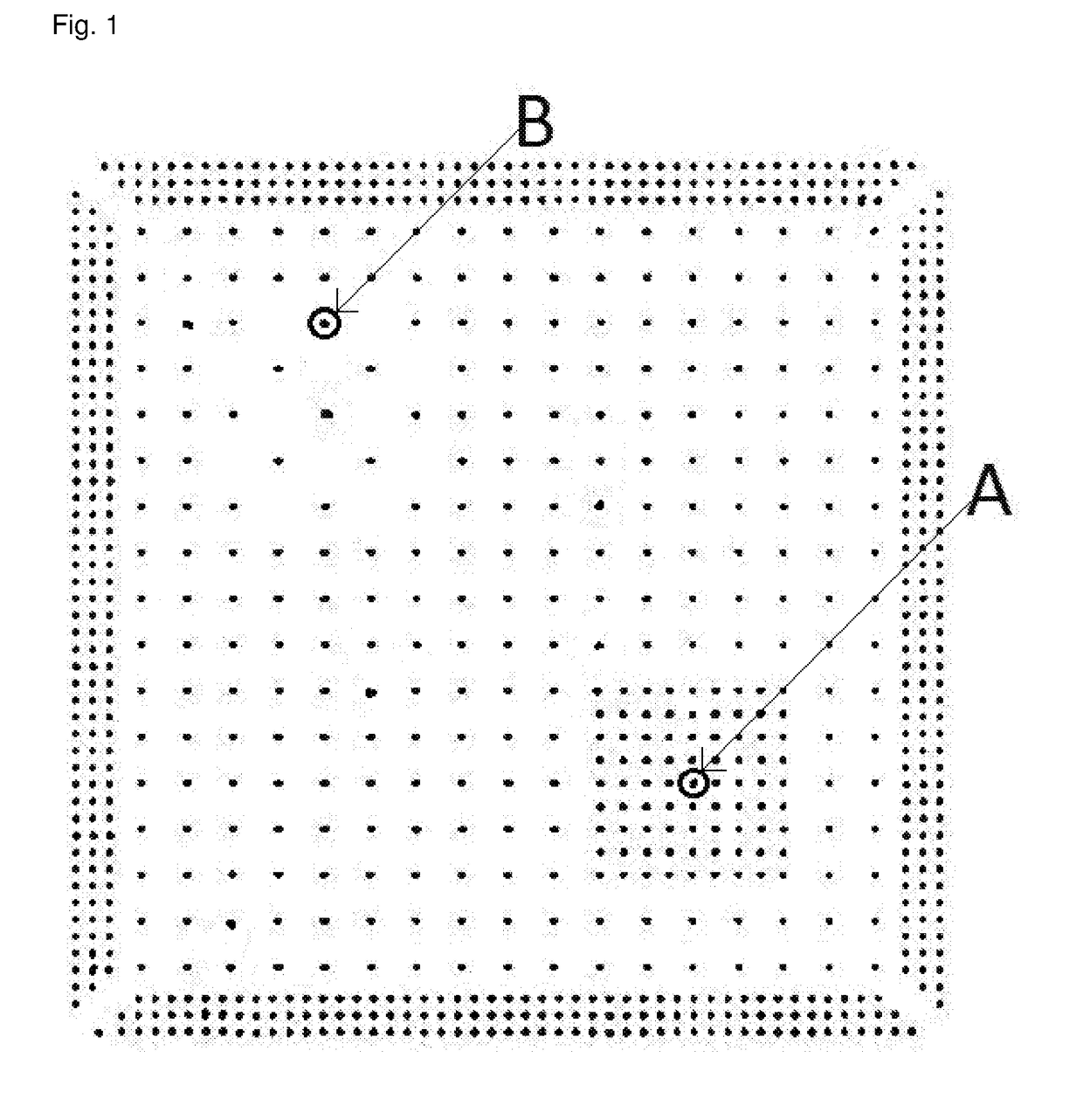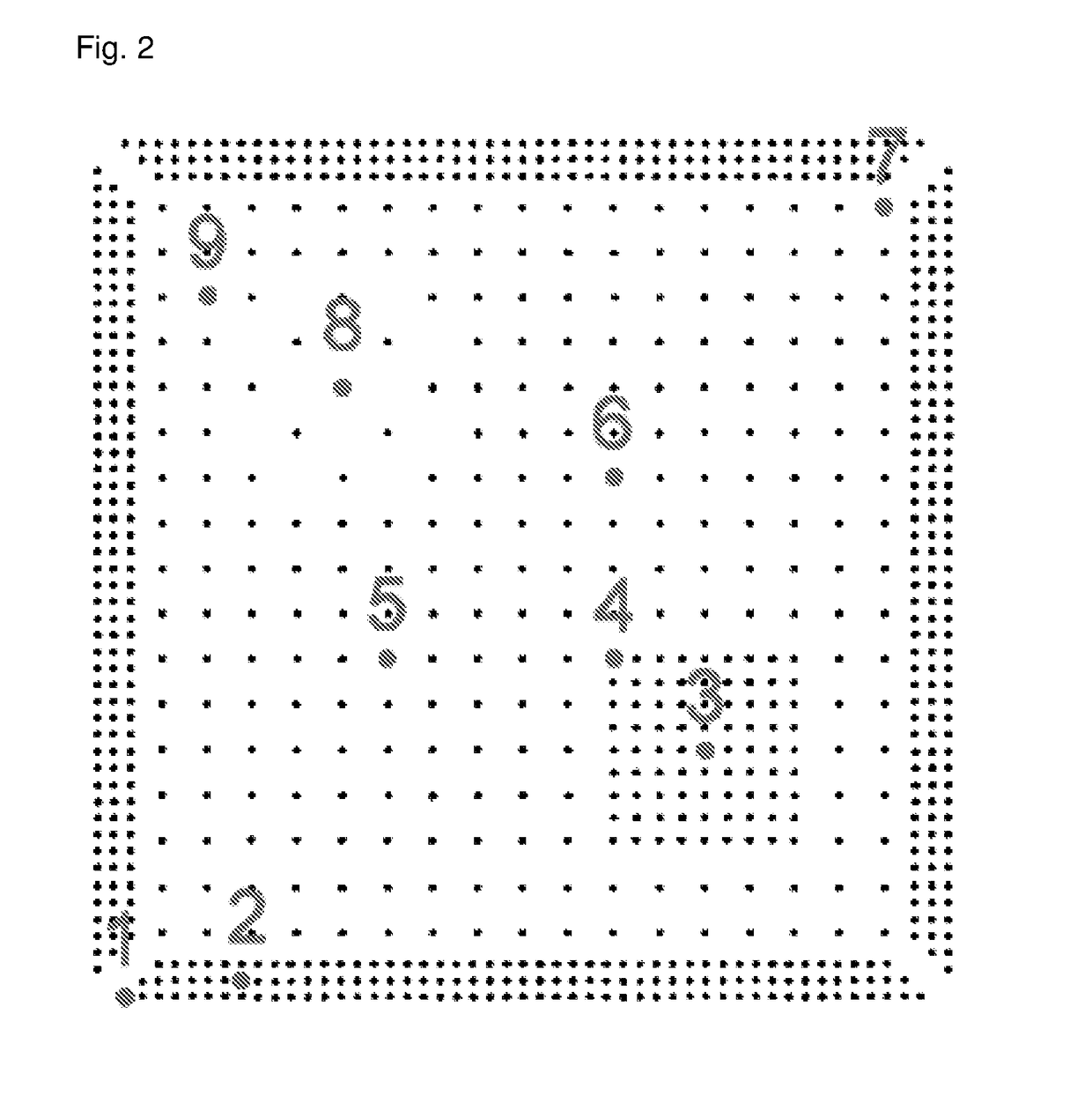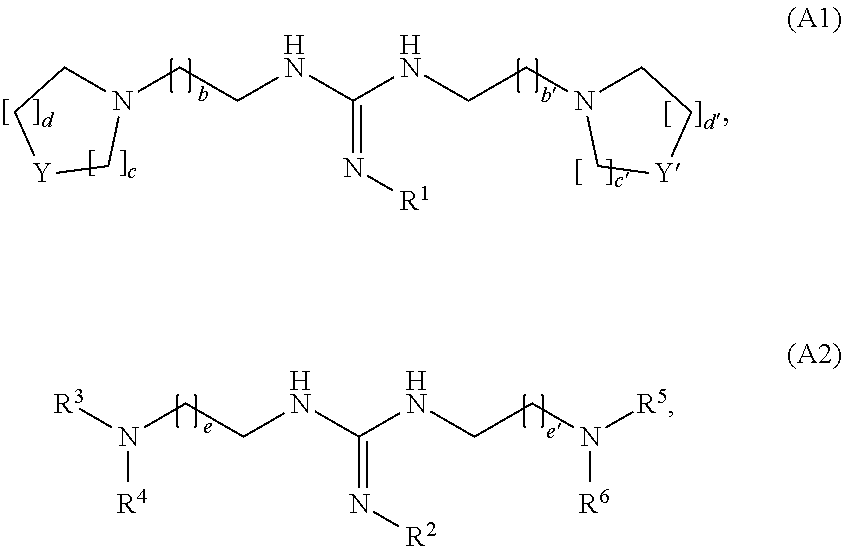Electrolytic copper plating bath compositions and a method for their use
a technology of electrolysis and composition, applied in the direction of electrolysis process, electrolysis components, semiconductor devices, etc., can solve the problems of low pillar growth, unfavorable pillar size distribution on the die, lack of contact between the die and the further components to which the die is assembled, etc., to achieve better conductivity of copper or other materials, less voids, and high plating rate
- Summary
- Abstract
- Description
- Claims
- Application Information
AI Technical Summary
Benefits of technology
Problems solved by technology
Method used
Image
Examples
application example 1
[0105]All application experiments were done with an Autolab PGSTAT302N from Metrohm Deutschland GmbH employing a soluble copper anode.
[0106]The profiles of the obtained copper pillars were analyzed with a Dektak 8 pro-filometer from Veeco Instruments Inc. after removal of the photo resist.
[0107]For the analysis of the purity of the deposited copper a time-of-flight secondary-ion-mass-spectroscopy device was employed: TOF.SIMS 5 from IONTOF GmbH. Additionally, standards created by ion implantation were deployed.
[0108]Pillar-coupons (i. e. silicon wafer pieces covered with a sputtered copper seed layer and patterned with a photo resist pillar bumps test mask) were used for the electroplating experiments. One pillar-coupon comprised nine dies arranged in a 3×3 matrix. The layout of one die is displayed in FIG. 1 and FIG. 2. The pillar-coupons were attached and contacted with an adhesive copper tape to a special coupon holder that was harnessed in place of a rotational disc electrode. T...
application example 2
[0121]As described above for Application Example 1, copper pillars were formed on coupons (i.e. dies) and 9 individual copper pillars on the centre die of each coupon were selected for the analysis of the copper pillar formation quality (see FIG. 2).
[0122]Again, solutions each comprising 50 g / l copper ions (added as copper sulphate), 100 g / l sulphuric acid, 50 mg / l chloride ions, 10 ml / l Spherolyte Cu200 Brightener (product of Atotech Deutschland GmbH), 12 ml / l Spherolyte Carrier 11 (product of Atotech Deutschland GmbH), and the tested additives in concentrations as given in the following Table 3 were used. The conditions and parameters as described in Application Example 1 were employed in this Application Example as well.
[0123]The copper pillars were measured as described below and analyzed using the following definitions for the assessment of the copper pillar formation quality.
[0124]WIP: Within profile non-uniformity. Calculated by the equation given below:
100×Zmax(pillar)=Zmin(...
PUM
| Property | Measurement | Unit |
|---|---|---|
| weight average molecular mass Mw | aaaaa | aaaaa |
| weight average molecular mass Mw | aaaaa | aaaaa |
| concentration | aaaaa | aaaaa |
Abstract
Description
Claims
Application Information
 Login to View More
Login to View More - R&D
- Intellectual Property
- Life Sciences
- Materials
- Tech Scout
- Unparalleled Data Quality
- Higher Quality Content
- 60% Fewer Hallucinations
Browse by: Latest US Patents, China's latest patents, Technical Efficacy Thesaurus, Application Domain, Technology Topic, Popular Technical Reports.
© 2025 PatSnap. All rights reserved.Legal|Privacy policy|Modern Slavery Act Transparency Statement|Sitemap|About US| Contact US: help@patsnap.com



